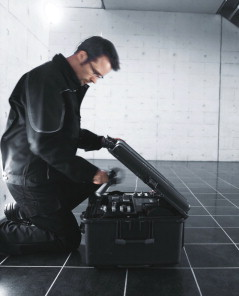
Many current pump systems are inefficient and the longer they have been in situ the greater the chances are that they are using considerably more energy than they should be. This can be due to a number of reasons including:
- Pump over-sizing
Change of system use since the original specification was selected
A poor service history
Like many companies, food supplier Unilever set strict goals and targets to focus themselves on attaining increasingly ambitious goals – this includes setting incremental environmental targets – and putting a series of measurements in place to check they are being met. At its ice cream factory in Gloucestershire, UK, Unilever opted to undertake a Grundfos pump audit to test the efficiency of its existing pumps.
A pump audit offers an on-site check-up but for pumping systems. Business accounts go through an audit process, which is conducted by trained accountants, who verify that the accounts are an accurate and true reflection of operations. In much the same way, the pump audit system from Grundfos offers a similar on-site check-up but for pumping systems.
Audit timings are agreed by individual arrangement with each client. The audit system is set-up at the site/location by a designated service engineer and this tool can be used in virtually all known applications with a solids content up to 5% and pipe sizes from 25 mm to 5000 mm.
The audit will then check the overall efficiency of the current pumps. This is achieved by means of a power meter that is set-up via two sets of power clamps that transmits the power information it collects to a pc based data logger. After a period of time (this depends on the application type, usage and load profile but is normally in the realm of a number of days) the collected data is analysed and it undergoes a number of calculations to make it relevant to the specific application. To complete this stage of the process a report is drawn up and presented to the client.
Recommendations are then made which will offer customers various options all of which will mean that the system will operate more efficiently, save money on bills as well as contributing towards conserving energy resources.
Aktobe are a water supply company in Kazakshtan. Recently, three of the company's facilities underwent extensive refurbishments as a direct result of Grundfos Pump Audits. The audits showed that there was a 40% energy saving potential that could be made for an investment of €342,000 meaning an annual saving of €181,300 could be realised. This translates that the new pump equipment will have paid for itself in only 23 months.
Joh Pengg is a well known wire company in Austria who also asked Grundfos to complete an assessment on its water-supply system. In this instance the pump audit showed that there was a 56% potential saving to be made by installing a new booster system. The outlay for this three-pump set was €21,500 with the savings amounting to €12,200. This means the energy improvements made will mean just a 21 month pay back period.
Returning to the Unilever factory, its audit concluded that the existing fixed speed 37 kW pumps that were costing £16,000 per annum to operate were now unnecessarily large and that in fact the new replacement pumps, due to the improved efficiencies they offered, need to have a much lower rating of only 15 kW. By simply implementing just this recommended change the annual saving available to them was £7,000 per annum.
Unilever was delighted with the recorded power consumption reduction that the audit process indicated, its subsequent analysis indications and the real results they are seeing having completed the process and fitted new pumps. They certainly think the whole process has been a very worthwhile exercise.






